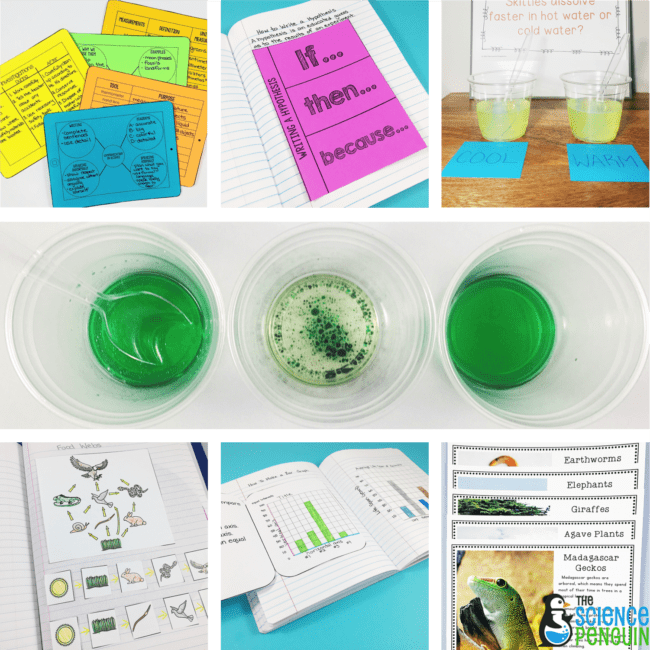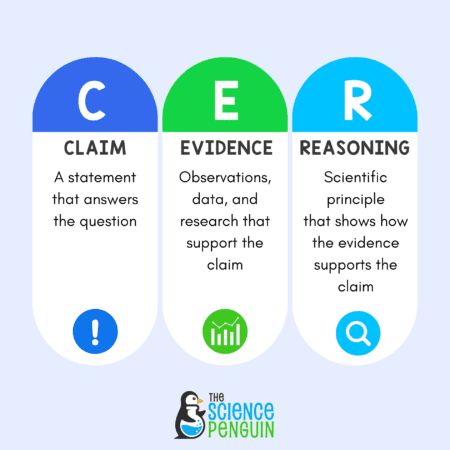
One of my favorite ways to address this standard all year long while also inspiring students is through read-alouds and a robust classroom library. It’s important to make sure representation is diverse and many interesting careers and historical stories are mentioned.
This list features affiliate links.
Category 1: Matter and Energy
5.5 The student knows that matter has measurable physical properties and those properties determine how matter is classified, changed, and used. The student is expected to:
5.5A classify matter based on measurable, testable, and observable physical properties, including mass, magnetism, physical state (solid, liquid, and gas), relative density (sinking and floating using water as a reference point), solubility in water, and the ability to conduct or insulate thermal energy or electric energy
Curious Pearl Explains States of Matter
Mario and the Hole in the Sky: How a Chemist Saved Our Planet
What’s the Matter in Mr. Whiskers’ Room?
Matter: Physical Science for Kids
5.5B demonstrate that some mixtures maintain physical properties of their ingredients such as iron filings and sand and sand and water
5.5C identify changes that can occur in the physical properties of the ingredients of solutions such as dissolving salt in water or adding lemon juice to water
Category 2: Force, Motion, and Energy
5.6 The student knows that energy occurs in many forms and can be observed in cycles, patterns, and systems. The student is expected to:
5.6A explore the uses of energy, including mechanical, light, thermal, electrical, and sound energy
Energy: Physical Science for Kids
Then and Now: A Journey Through the History of Machines
Burn: Michael Faraday’s Candle
Whoosh: Lonnie Johnson’s Super Soaking Stream of Inventions
Clang: Ernst Chladni’s Sound Experiment
5.6B demonstrate that the flow of electricity in closed circuits can produce light, heat, or sound
Electrical Wizard: How Nikola Tesla Lit Up the World
You Wouldn’t Want to Live Without Electricity
5.6C demonstrate that light travels in a straight line until it strikes an object and is reflected or travels through one medium to another and is refracted
Curious Pearl Investigates Light
5.6D design a simple experimental investigation that tests the effect of force on an object
Curious Pearl Kicks Off Force and Motion
The Marvelous Thing That Came From a Spring
Category 3: Earth and Space
5.7 The student knows Earth’s surface is constantly changing and consists of useful resources. The student is expected to:
5.7A explore the processes that led to the formation of sedimentary rocks and fossil fuels
Buried Sunlight: How Fossil Fuels Have Changed the Earth
5.7B recognize how landforms such as deltas, canyons, and sand dunes are the result of changes to Earth’s surface by wind, water, or ice
Cracking Up: A Story About Erosion
5.8 The student knows that there are recognizable patterns in the natural world and among the Sun, Earth, and Moon system. The student is expected to:
5.8A differentiate between weather and climate
5.8B explain how the Sun and the ocean interact in the water cycle
Water: National Geographic Kids
5.8C demonstrate that Earth rotates on its axis once approximately every 24 hours causing the day/night cycle and the apparent movement of the Sun across the sky
Somewhere in the World Right Now
5.8D identify and compare the physical characteristics of the Sun, Earth, and Moon
Aerospace Engineer Aprille Ericsson
Scott Kelly: My Journey to the Stars
Category 4: Organisms and Environments
5.9 The student knows that there are relationships, systems, and cycles within environments. The student is expected to:
5.9A observe the way organisms live and survive in their ecosystem by interacting with the living and nonliving components
Small Wonders: Jean-Henri Fabre and His World of Insects
The Watcher: Jane Goodall’s Life With the Chimps
5.9B describe the flow of energy within a food web, including the roles of the Sun, producers, consumers, and decomposers
5.9C predict the effects of changes in ecosystems caused by living organisms, including humans, such as the overpopulation of grazers or the building of highways
5.9D identify fossils as evidence of past living organisms and the nature of the environments at the time using models
5.10 The student knows that organisms have structures and behaviors that help them survive within their environments. The student is expected to:
5.10A compare the structures and functions of different species that help them live and survive in a specific environment such as hooves on prairie animals or webbed feet in aquatic animals
Bone by Bone: Comparing Animal Skeletons
Manfish: A Story of Jacques Cousteau
5.10B differentiate between inherited traits of plants and animals such as spines on a cactus or shape of a beak and learned behaviors such as an animal learning tricks or a child riding a bicycle
Inheritance of Traits: Why is My Dog Bigger Than Your Dog?
Classroom Resources
If you are a 5th grade Texas teacher, you will LOVE these TEKS-aligned science resources.
This is a full-year resource for 5th grade. You can even use a Purchase Order or payment plan! Learn more >

There are many resources available, including free planning guides, stations, interactive notebook templates, test prep resources, and so much more in my TpT store.





2 thoughts on “The Ultimate 5th Grade Science TEKS Book List”
What a treasure…thank you for curating this list, Ari!
Thank you Ari!
I wrote a Donor’s choose grant and will be receiving my books soon! Thank you for the list!